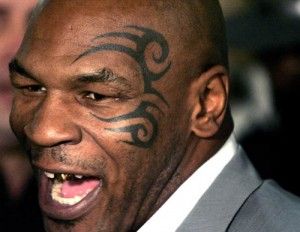
Most everyone has watched the Hangover movies. It’s a movie about the adventures of some friends and a night they can’t remember. These friends do outrageous things while incapacitated by alcohol and/or drugs. One of the outrageous things that one of these friends does in Hangover II is to get a tattoo. That doesn’t sound outrageous until you see the tattoo is on his face and it is identical to the tattoo on Mike Tyson’s face. It’s a tribal tattoo that wraps around the actor’s left eye. The Mike Tyson reference goes back to the original Hangover movie.
Hangover II was being released to audiences on May 28. Interestingly enough, on April 19, S. Victor Whitmill, the artist of Mike Tyson’s tattoo, obtained a copyright for his 8 year old work. This enabled him to file a lawsuit on April 28, just prior to the film’s opening. He claimed the tattoo was used for the movie and promotion of the movie without his permission. Warner Bros., who released the movie, claimed they used the tattoo under “fair use”.
On May 24, a Missouri judge denied an injunction on the release of the film. The judge, however, also stated that Whitmill did have a case. This could mean a lengthy copyright infringement lawsuit for Warner Bros. Warner Bros offered to digitally alter the tattoo in the home video version of Hangover II. As it turns out, that offer and the lawsuit was a moot point when Warner Bros and S. Victor Whitmill came to an agreement in June for an undisclosed amount.
In looking at this case, it may seem that the tattoo artist, S. Victor Whitmill, rushed to get a copyright when he realized the tattoo was being used in a film, allowing him to make some money. That may be true, but he clearly had creative rights to it. This case shows the importance of making sure any image or creative work of another is used with permission.

